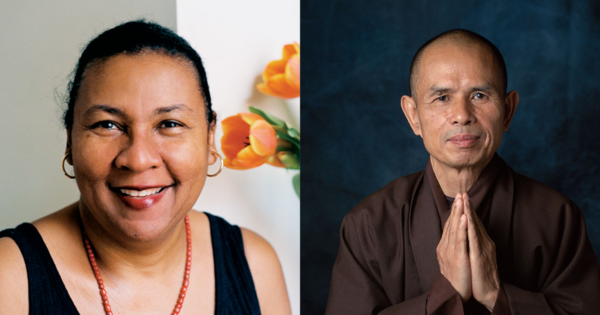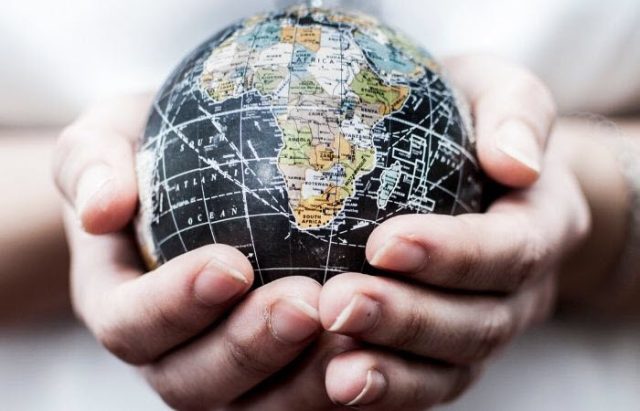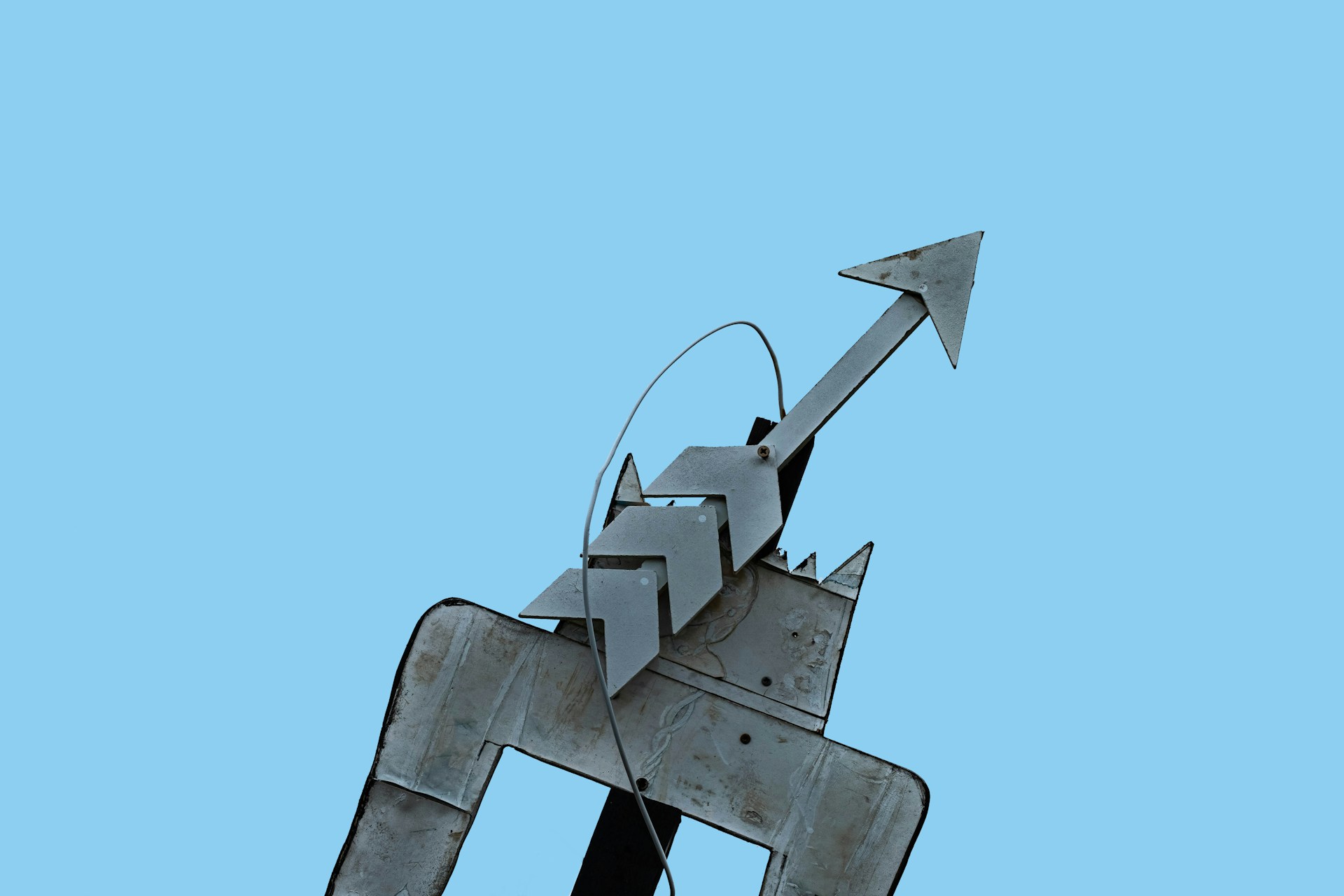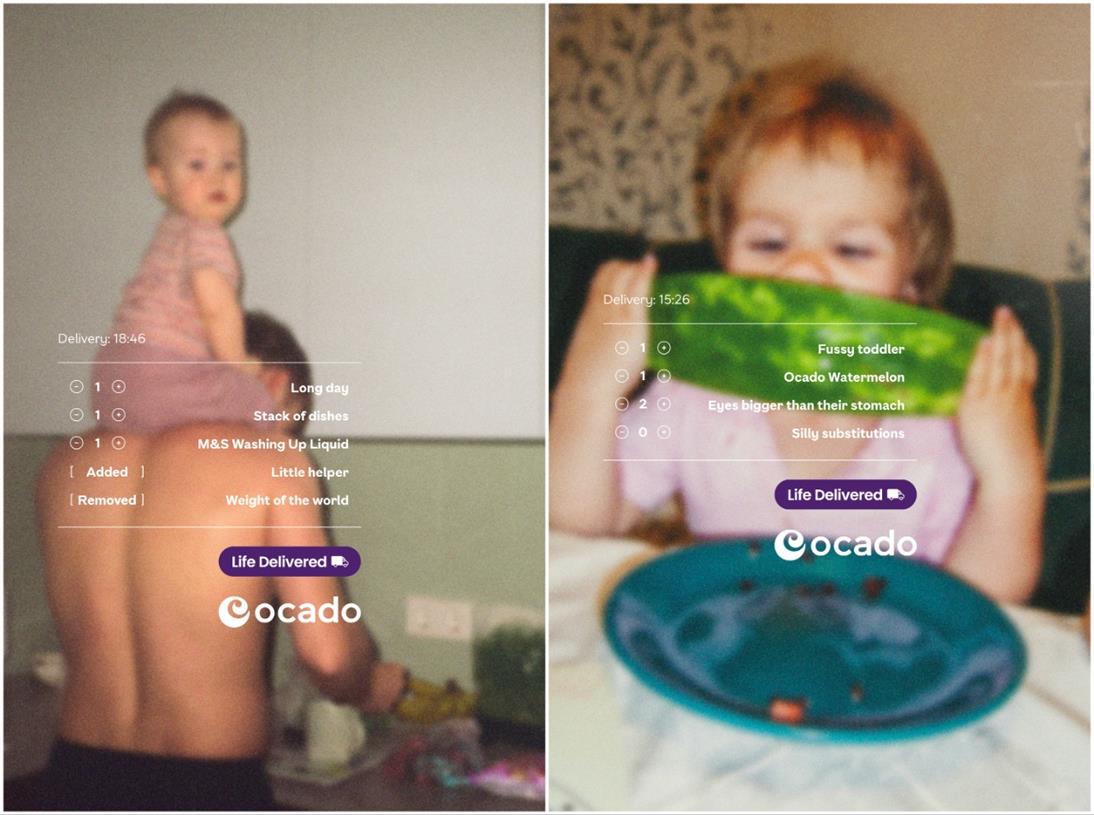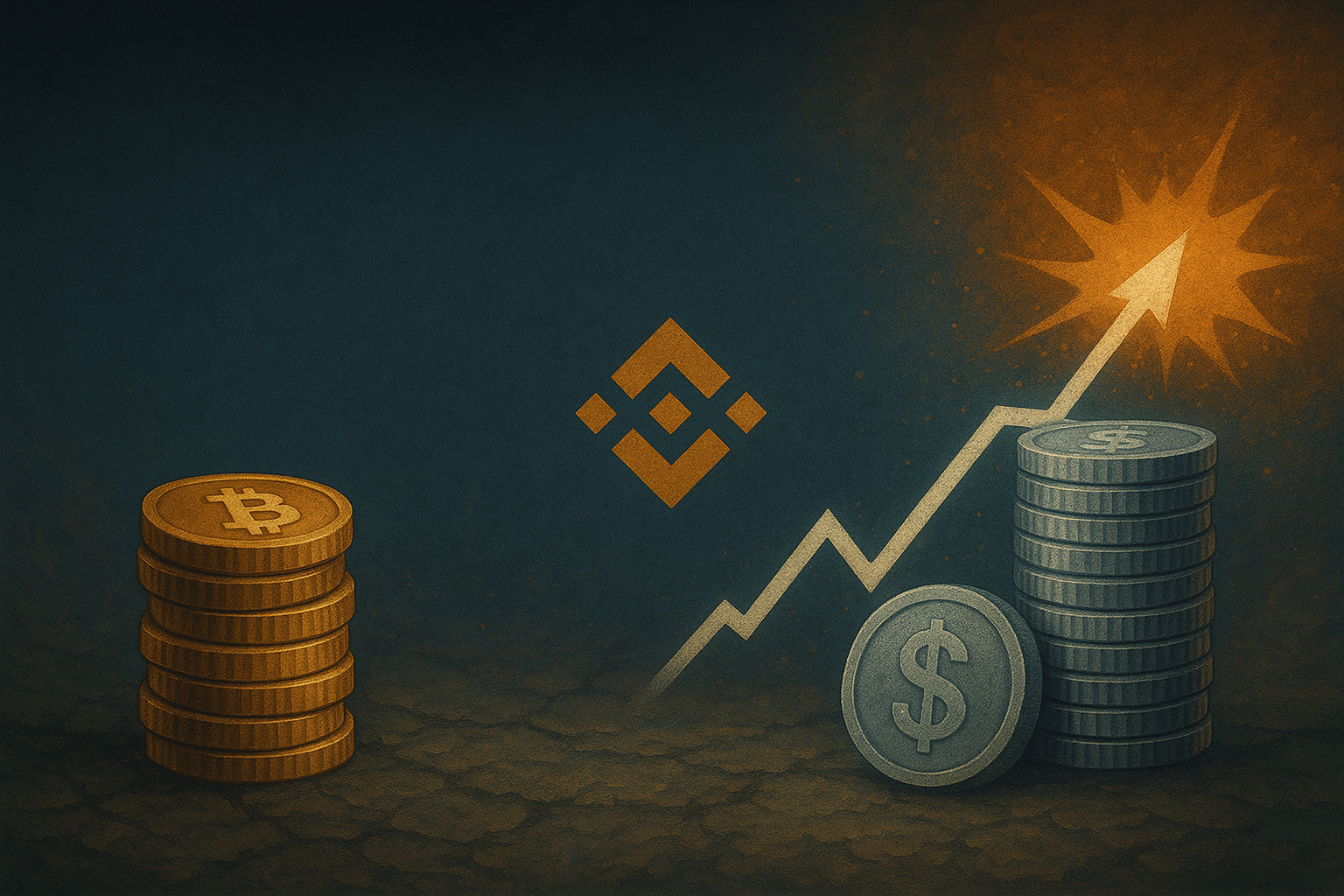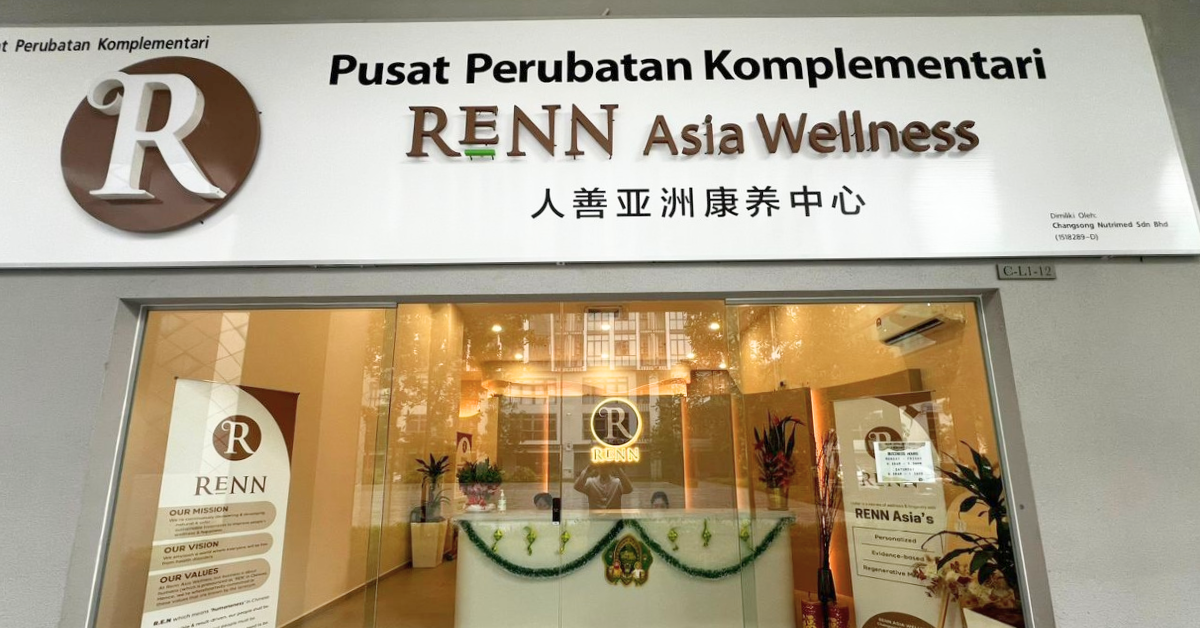Four Buddhists Share What Vesak Means to Them
Four Buddhists explore the meaning and lessons of Vesak, the Buddhist holiday that commemorates the birth, death, and enlightenment of the historical Buddha. The post Four Buddhists Share What Vesak Means to Them appeared first on Lions Roar.

Thomas Calobrisi, Lama Hun Lye, Mihiri Tillakaratne, and Noel Alumit explore the meaning and lessons of Vesak, the Buddhist holiday that commemorates the birth, death, and enlightenment of the Buddha.

Photo by Vinh Dao.
Vesak: Understanding the Lessons Behind the Legends
Thomas Calobrisi explains the extraordinary events of the Buddha’s life that are celebrated on Vesak — his birth, enlightenment, and final nirvana — and how we can look to these legends not for historical information, but as opportunities to form our own understandings of Buddhism.
The term Vesak comes from the Pali term Vesakha; it refers to the fourth month of the Indian lunar calendar, which corresponds roughly to the month of May on the Western solar calendar. According to legend, the Buddha was born, achieved enlightenment, and passed into nirvana on the full moon day of Vesakha. While East Asian Buddhist traditions only recognize the Buddha’s birth on this day, it is an important day of celebration for Buddhists around the world.
I celebrated Vesak for the first time in 2019, while a doctoral student in religious studies at the Graduate Theological Union in Berkeley, California. I got to experience hanamatsuri (“flower festival”), which is typically celebrated by Japanese American Buddhists to commemorate the Buddha’s birth, at the Buddhist Churches of America’s (BCA) inter-sectarian Vesak ceremony in early April. Attending the event alongside my friends, which included BCA minsters-in-training, Zen chaplains, and Christian theologians, I was struck by the diversity of traditions present: BCA ministers, Zen priests from San Francisco Zen Center, Sri Lankan monks from Sacramento, as well as Chinese Chan and Vietnamese Thien monks.
The dharma will be our teacher now; what will it teach you?
At the center of the festivities was an image of the Buddha as a newborn baby, with one hand pointing to the heavens and the other to the earth, as the legends portray him doing. Chanting and incense filled the hondo while attendees took turns bathing the baby Buddha in sweet tea, as is the Japanese custom on hanamatsuri. There were Boy Scout troops and choirs of all ages singing, with varying degrees of enthusiasm. Ministers, monks, and priests offered dharma messages that spoke to the meaning of the Buddha’s birth, realization, and final nirvana.
The events of the Buddha’s life celebrated on Vesak come to us in the form of legend; they portray extraordinary events, such as when the newborn Buddha took seven steps and pronounced, “Between heaven and earth, I alone am the World-honored one.” My one-year-old nephew, though remarkable in his own way, has yet to make any such proclamations of his peerless status! These legends of the Buddha, of course, are not accounts of historical events. As Bernard Faure observes in The Thousand One Lives of the Buddha, the more we attempt to look “behind” the legends, the picture of the Buddha becomes so nondescript as to be meaningless. But if we can’t take refuge in historicism, and all we are left with are legends, how do we understand them? What recourse do we have when dealing with extraordinary and miraculous events of the Buddha’s life portrayed in the sutras?
I posed just this question to one of my students last spring at the Institute of Buddhist Studies. He answered that we should look for what is liberating in the text rather than what is factual. He was proposing a storied interpretive method, one expressed by Nagarjuna in his Commentary on the Great Perfection of Wisdom, as relying on the meaning rather than the words. As the philosopher Pierre Hadot would say, we should come to the legends as an opportunity for formation rather than information. We have two and a half millennia of tradition to guide our efforts, yet still it falls on each successive generation to take up the legends anew as a means of formation.
Let me take an example from a Mahayana Buddhist text, whose title Richard S. Cohen renders as “The Splendid Vision.” The scene is a typical one for Mahayana sutras: the Buddha was residing at the home of Avalokiteshvara on Potalaka Mountain with a retinue of thousands of advanced monks and nuns, top bodhisattvas like Manjushri, gods and goddess, and heavenly kings. There, the Buddha enters a samadhi called “abiding in the knowledge of great compassion, which takes on all beings as its object of contemplation.”
The power of this samadhi fills the entire universe with light; for a moment, the blind can see, the deaf can hear, the poor are made wealthy; for a moment, the attention of every being was turned to the Buddha—gods and humans turned away from their pleasures, demons and demi-gods stopped their bickering, even those in hell could briefly recognize one another; all were filled with love and freed from their torments; the earth shook in six directions. Now, the scene of this sutra and the events it recount are certainly extraordinary, but we don’t need to read it literally to access the meaning behind the words. The typical run of things—of greed, hatred, and delusion—were ground to a halt by the power of the Buddha’s compassion.
Seeing the text as an opportunity for formation, not information, we might imagine what would this sort of disruptive compassion look like in our own time. Writers such as Zoketsu Norman Fischer and Doshin Nathan Woods see the need for Buddhists to show their solidarity for movements by workers and marginalized groups to achieve economic and social justice. While I hesitate to ascribe something as abstract and ahistorical as “greed” as the fundamental problem, seeking to lessen greed in ourselves and to prevent greedy people from taking advantage of others is a worthwhile pursuit. Indeed, creating an economy focused on meeting people’s needs and allocating duties based on their abilities might be a feat as extraordinary as the Buddha’s samadhi filling the entire universe with light and love! This is not to suggest such a goal is impossible or naively utopian, only that, if achieved, it will become the stuff of new legends.
Looking to the extraordinary events of the Buddha’s life that are celebrated on Vesak—his birth, enlightenment, and final nirvana—we can likewise consider these as opportunities for formation that is conducive to liberation. Rather than spoon-feed you my own interpretations, I urge you to consider these narratives not for what history lies “behind” the legends but to grapple with them for their meaning, which might not lie directly within the words. If there was a human person “behind” the legends, he is long gone. Yet, as the Buddha himself said in his final hours with us on Earth, the dharma will be our teacher now; what will it teach you?
On Taking Refuge
Lama Hun Lye explores the importance of the Three Refuges to Buddhists, and what it really means to “take refuge.”

Photo by Anton Potapenko.
Editor’s Note: Vesak allows Buddhists to reflect on the Three Refuges: the Buddha, Dharma, and Sangha, and we can see the Three Refuges reflected in what Vesak commemorates. When we celebrate the birth of the Buddha we celebrate the first refuge: the Buddha himself as a teacher and role model for our individual spiritual paths. Celebrating the Buddha’s enlightenment allows us to learn from and reflect on the second refuge, Dharma, or the Buddha’s teachings that resulted from this awakening. When we commemorate the Buddha’s mahaparinirvana, or the passing of the Buddha’s physical body and attainment of nirvana, we also can reflect on how the Buddha passed on the responsibility of teaching the Dharma to the Sangha, or the monastic community. —Mihiri Tillakaratne, Associate Editor
As Vesak Day comes around again, it is an appropriate occasion for reflecting on one of the most central acts in Buddhists’ lives: taking refuge. When we “go for refuge,” we are re-orienting our lives towards the Buddha, the Dharma, and the Sangha. Stating our commitment to the Three Refuges, also called the Three Jewels, is accepted by all Buddhists as the gateway to a life of dharma.
“To the Buddha, I go for refuge. To the Dharma, I go for refuge. To the Sangha, I go for refuge.” When these words are uttered with understanding and conviction, one enters the Buddhist path. At first, uttering this deceptively simple formula was enough to formally mark one’s transition from the life of an ordinary householder to that of a monastic. In time, the Buddha introduced more complex ceremonies for marking different levels of commitment, so “going for refuge” by formally repeating the three-fold refuge formula became the first step in committing oneself to the Buddha’s way.
We must take the Dharma into our own experience until it becomes dharma as realization.
Taking refuge in the Buddha begins with being inspired by the example of the 6th-century BCE Indian prince Siddhartha and remembering his beginnings. Siddhartha transformed himself from being under the power of the three poisons into a completely liberated and awakened being we call “buddha.” Under the schema of “outer, inner, and secret” often used in Tibetan Buddhism, this is the “outer” aspect of relying on the Buddha as refuge. The “inner” level is having confidence that we, too, can achieve liberation. The Buddha is also understood as a state of freedom from mental defilements that both you and I can achieve. When we turn to the Buddha with admiration, respect, and devotion, we start the journey of our own transformation from a state of confusion to clarity. “To the Buddha, I go for refuge” is thus less a prayer or supplication and more an anchor for right mindfulness. By remembering this potential, we enter the “secret” level of refuge in the Buddha. Here, our ultimate refuge is our own mind—naturally luminous and boundless but temporarily obscured.
The Buddha’s teaching, or Buddhadharma, becomes a refuge when we know how to “return to and rely on” it— or “guiyi,” the expression used in my native language, Mandarin Chinese, to mean “taking refuge.” Learning, practicing, and actualizing the Dharma isn’t adopting something anew or making one thing into something else. Instead, it is a reliance on what is real, the ultimate Dharma, the Dharma as realization. Often, we turn the Dharma into another set of beliefs and end up substituting one religion for another, replacing what we see as old rusty chains with exotic golden ones. But chains are still chains, and until we break these chains, we will never be free.
The Buddhadharma as refuge is the dharma that makes us awakened when we return to and rely on it. Somewhat cheekily, I often suggest to Buddhist audiences that instead of relating to what’s known as the “four noble truths” as “truths” (with a capital “T” even!), we should relate to the Buddha’s fundamental teaching as the “four noble rumors.” They are “noble” because the Noble One–the Buddha–taught this to the world for over 45 years. They are also “noble” because they ennoble those who realize them. Essentially, approaching them as “rumors” to be verified by ourselves rather than “Truths” to be believed is how the Buddha taught us to relate to his teachings. The Buddha’s invitation to approach his teachings critically and analytically is best expressed in the Pali phrase “ehipassiko,” which means, “Come and see!” Thus, the Dharma only becomes a refuge for us when we turn it from teachings and theories into realization and reality. We must take the set of teachings, the Dharma, into our own experience until it becomes dharma as realization.
The third of the three refuges is the Sangha. During the Buddha’s time, “sangha” was a term used by secular groups, such as craftsmen, referring to what we would call professional guilds. Perhaps in using the term “sangha,” the Buddha wanted to emphasize the voluntary nature of his monastic community rather than associating it with any sense of compulsion, duty, or responsibility that spiritual or religious communities tend to demand. Instead, there are neither commandments nor compulsions in the Buddha’s sangha. This Sangha is united by a common commitment to virtue.
In teaching us to seek out the sangha as refuge, the Buddha referred to “the noble sangha,” the monastic and lay individuals who have gained a glimpse of the true nature of existence. We rely on such individuals because they have traversed what we will be traversing and, thus, can serve as guides to us. Refuge in the sangha also refers to the conventional sangha, the community of monks and nuns that has been the main transmitters of the Buddhadharma from the Buddha down to us.
On this Vesak, as we commemorate the Buddha’s birth, enlightenment, and mahaparinirvana, I invite you to utter the following words with conviction and understanding: “To the Buddha, I go for refuge. To the Dharma, I go for refuge. To the Sangha, I go for refuge.” This three-fold declaration of going for refuge in the Buddha, Dharma, and Sangha, at its core, is an act of choosing freedom: to be free temporarily and ultimately from the sufferings of confused, cyclic existence. With this, your journey of returning to and relying on the Three Jewels begins.
Sunday Schoolers Onstage: Using Vesak to Highlight the Younger Generation
Associate Editor Mihiri Tillakaratne reflects on her temple’s unusual Vesak celebrations, and how giving youth the space to share their understanding of the dhamma can create a new generation of Buddhists

Dharma Vijaya Buddhist Vihara Sunday school students perform bhakthi gee, or Buddhist devotional songs, during Vesak. Photo courtesy of Dharma Vijaya Buddhist Vihara.
Vesak represents many things to Buddhists: celebration, refuge, community, and more. For my temple, Vesak means the kids get to show off their knowledge!
I’ve always known that there’s something special about my Sri Lankan Buddhist temple, Dharma Vijaya Buddhist Vihara in Los Angeles, but during Vesak, its unique approach becomes clear. Most Sri Lankan Buddhist temples in Southern California mark Vesak with one day of religious sermons and devotional singing by youth. Dharma Vijaya, however, celebrates Vesak as a multi-day weekend festival, with only Sunday being reserved for traditional Vesak activities. Saturday is devoted entirely to the youth, with events spanning from the mid-morning until the night. Every event is performed by the younger generation, spanning from preschool to high school students, with even children as young as three participating.
It wasn’t always this way, though.
In the early nineties, my Ammi (“mother”) was one of the first lay principals of Dharma Vijaya’s Sunday school. Her proposal that the children sing Sri Lankan Buddhist devotional songs, or “bhakthi gee”, in Sinhala during the Vesak celebrations started a hullaballoo.
In allowing the kids a voice and a stage to demonstrate their knowledge and skills, the temple creates young people who truly live each day according to Buddhist teachings.
Before this, only the congregation’s adults, all immigrants to the U.S., sang onstage while the kids sat in the audience, bored. As I grew older, Ammi wanted kids to be more involved in Vesak.
No one believed she could pull it off, and none of the other parents thought it would work, thinking it was a waste of time and energy. “How can these kids who don’t know a word of Sinhala sing Sinhala songs?” they asked. “These children are American! They can’t do it!” Even the supportive monks were skeptical.
Ammi was persistent, though, and as Sunday school principal, she had the authority to make it happen! My Ammi and Tatti (“father”) transliterated each song into English script, while her more musically inclined friends helped with arranging the songs. Most importantly, they translated each song, so we kids would know what the heck we were singing!
I remember the songs still, particularly Danno Budunge, or “dan-no bu-dhun-gay” as it was transliterated on our lyrics sheets. The translated meaning under each line told us we were singing about the importance of the city of Anuradhapura in Sri Lanka’s Buddhist history.
We kids practiced during Sunday school in the weeks leading up to Vesak. Ammi cleverly got us to practice even when we weren’t at the temple. The adults recorded songs onto multiple cassette tapes, distributing them amongst each family. Ammi gave the parents explicit instructions to play the tapes during car rides: to and from school, while running errands, and anytime kids would be in the car.
At the time, there were only two Sri Lankan Buddhist temples in the area (now, around 20!), so our congregation commuted from all over Southern California. Everyone had at least a 30 minute drive or longer each way to the temple—plenty of practice time. I remember carpooling with my friends, cassette tape playing and our parents singing along with us, helping with pronunciation, during our weekly treks to the temple through the ubiquitous LA traffic.
Ammi’s plan, of course, was a rousing success, and now all the Sri Lankan temples in Southern California have kids singing bhakthi gee. Ammi showed ‘em all it could be done! She trusted in the children’s abilities to sing in a language that they very little of knew or didn’t know at all. “Trust in the next generation. They can do it!” she said.
This trust continues in Dharma Vijaya’s current Vesak celebrations, which are very different from my childhood. For over 20 years, the temple has held multiday Vesaks, ensuring that one day is for the younger generation, organized by the younger generation of Sri Lankan monks.
The youth-focused day begins with Pali chanting contests for pre- and elementary school aged children, speech contests for middle and high schoolers, a debate involving multiple teams, a play in Sinhala, and devotional songs performed by the multigenerational Sunday school community. One or two adults, former Sunday school students born and/or raised in the U.S., emcee the event.
Vesak always has a large audience, including monks and nuns from other Asian American temples, representatives of local and state government, and representatives from the Sri Lankan government. However, these dignitaries aren’t given the mic—it’s the kids on stage showing off their expertise in the dhamma. One nun I spoke with who judged the Pali chanting contest shook her head in amazement and went, “Wow, these kids!”
I’ve emceed Vesak several times, and judged various essay contests, speech contests, and debates over the years, and like her, I’m always so impressed. These kids don’t do rote memorization; instead, they understand complex Buddhist concepts at a young age. I’ve heard some of our tweens use terms like kalyanamitta accurately in casual conversation. These kids really know their stuff!
Monks at most Buddhist temples are the religious authorities on the Pali canon for their communities, but at Dharma Vijaya, kids are encouraged to study Pali scripture. Students are asked to write on specific suttas for the Vesak essay contests, and Sunday school activities include discussing Pali canonical texts. In being given a role reserved for clergy, the younger generation becomes a mouthpiece for transmitting Buddhist teachings.
Since many people who may not attend the temple regularly (or even those who attend other temples) come to Dharma Vijaya’s Vesak celebrations, these contests are not only a learning experience for the students involved, but also a way for non-Sunday school and non-participating youth to absorb Buddhist teachings. Dharma Vijaya’s Abbot, Venerable Walpola Piyananda, always says, “They won’t listen if it’s me. But they will listen if it is another child like them.”
During these contests, the kids learn more than Buddhist concepts. In Ven. Piyananda’s book, Sharing Buddhism in the Western World, he shares one teen’s response to a Vesak essay competition prompt, “How I feel about my temple.” Buddhist concepts, she says, “could be taught at many other pansals (“temples”) and Sunday schools, however there is something unique I learned at Dharma Vijaya, and that was how to do public speaking.” During her very first speech contest, she writes, “I was in second grade and public speaking was not in my curriculum, but it didn’t matter because I found help and got my speech done. It took me years to be confident in giving speeches. In fact, I don’t think I was confident in public speaking until this last Vesak, which was 11 years after my first one!”
In addition to learning public speaking and leadership skills, the knowledge the kids demonstrate during Vesak infuse their lives even after they have left Sunday school. Recently, I ran into an auntie whose children, now in their mid and late twenties, used to participate (and won!) several Vesak contests. She told me how the lessons they learned at Dharma Vijaya have influenced their worldview. When considering career options after undergrad, both refused some of her suggestions, like using their engineering skills to create machinery for the U.S. military. They told her their chosen careers should promote ahimsa and a right livelihood. They also read Buddhist books on their own, still wanting to learn, especially since they don’t have Sunday school anymore to foster their Buddhist study.
Dharma Vijaya’s Vesak celebrations have changed throughout the years. Now, instead of the cassettes of the nineties, there are shared Google Sheets with links to YouTube videos of songs. However, one thing remains the same: in allowing the kids a voice and a stage to demonstrate their knowledge and skills, the temple creates young people who truly understand, but most importantly, live each day according to Buddhist teachings.
Vesak, Asian American and Pacific Islander Heritage Month, and Remembering Our History
Vesak falls during Asian American and Pacific Islander Heritage Month. Associate Editor Noel Alumit reveals how Asian American practitioners were vital to his introduction to Buddhism, while Associate Editor Mihiri Tillakaratne discusses the importance of these communities’ histories to understanding Buddhism in the U.S.
On Vesak, I will sit, as I’ve done for years now, in quiet contemplation on the birth, enlightenment, and death of the Buddha. Part of my contemplation is to honor the ancestors who spread the dharma across the globe. Since I was raised Catholic, I consider myself an American convert to Buddhism. Unlike other American converts who have been introduced to the dharma through brilliant white practitioners like Alan Watts, Allen Ginsberg, or Robert Thurman, I was influenced by the Asian diaspora. It was other Asian American Buddhists, my friends and colleagues, who introduced me to Buddhism and supported my practice of the dharma.
Vesak falls in May, which is also Asian American and Pacific Islander (AAPI) Heritage Month. AAPI Month is described as a time to observe “celebration of Asian and Pacific Islanders in the United States.” This month many major cities have festivals, parties, or special events paying homage to Asian American and Pacific Islanders who have contributed to the fabric that is America. An important AAPI contribution that we can also celebrate this month is the planting of the seeds of Buddhism in North America.
We can’t have a discussion of Buddhism in American without including the first Asian immigrants to enter the United States. While some Chinese immigrants came to the U.S. as early as 1815, they began arriving in significant numbers in the late 1840s, most coming through Angel Island in San Francisco, California, the Ellis Island of the West Coast. The Sze Yap Company, a Chinese American fraternal society, built the first Buddhist temple in San Francisco in 1853. Many of these migrants came to work on the California Gold Rush and on the construction of the transcontinental railroad. In 1867, over 2,000 Chinese laborers, who made up 80-90% of workers on the transcontinental railroad, organized a peaceful nonviolent strike for better working conditions.
Upon reflecting on Vesak, I think of the Asian Americans who were born, died and carried the dharma, including what it means to be enlightened.
Chinese migration was seen as a “Yellow Peril” invasion, and Chinese Americans faced anti-Asian sentiment through targeted legislation and violence. Since the 1875 Page Act barred Chinese women from immigrating to the U.S., thereby preventing Chinese Americans from forming families, Buddhist spaces were vital for creating a sense of community. The 1882 Chinese Exclusion Act led to the barring of all Chinese migrants until 1943, continuing to isolate Chinese American communities and preventing them from growing. During the 1871 Los Angeles Chinese Massacre, a mob of 500 people destroyed Chinatown and lynched 19 Chinese men. In 1885, a mob in Tacoma, Washington burned down Chinatown, and violently forced an entire community onto trains out of the city. Unfortunately, this is just a tiny selection of the widespread anti-Chinese violence during this period. There was no recourse or justice, since in the 1854 case People v. Hall, the California Supreme Court ruled that Chinese people could not testify against white defendants.
Japanese Americans also contributed to the development of Buddhism in America, as they, like Chinese immigrants, established temples and spiritual communities wherever they settled. The first major migration of Japanese Americans began in 1868, when they came to work on sugarcane plantations in Hawaii. In 1889, the first Jodo Shinshu Buddhist temple, Honpa Hongwanji Mission of Hawaii, was established and still exists today. The first Japanese Buddhist temple on the U.S. mainland, the Buddhist Church of San Francisco, was established in 1898, and is currently located in Japantown. While Japanese Americans were recruited by agricultural corporations to replace Chinese farmworkers, they also faced racially targeted legislation. By 1910, most Japanese Americans were in the agriculture industry, and in the 1910s and 1920s, multiple alien land laws were passed, preventing Japanese Americans from owning land and property. After the 1924 Immigration Act barred immigration from Japan, the vast majority of Japanese Americans were born in the U.S.
Even though most Japanese Americans were U.S. citizens, on February 19, 1942, two months after Pearl Harbor, President Franklin Delano Roosevelt signed Executive Order 9066. This authorized the relocation and incarceration of over 125,000 Japanese Americans, supposedly because their loyalty to Japan made them threat. However, the Munson Report in November 1941 stated that there was a “remarkable, even extraordinary degree of loyalty among [the Japanese]” to the United States, and no Japanese American citizen or Japanese national in the U.S. was ever convicted of espionage. Despite being forcibly relocated and unjustly incarcerated, Japanese Americans continued their Buddhist practice and cultivated Buddhist communities in internment camps. The first Buddhist services in the military occurred during World War II ecause of Asian American servicemen, such as the 442nd Infantry Regiment, which was made up of Japanese Americans. While their families and communities were incarcerated back home, the 442nd fought for the United States and became the most decorated unit in American history.
It was also during wartime, in this case, the Vietnam War, that saw the migration of Southeast Asians refugees to the United States, primarily from Vietnam and Cambodia. The Vietnamese immigrated to the U.S. in large numbers after the fall of Saigon in April 1975. Unlike the legal restrictions faced by the Chinese and Japanese, Vietnamese immigration to the U.S. was supported by legislation and programs such as the 1975 Indochina Migration and Refugee Assistance Act, the 1979 Orderly Departure Program, the 1980 Refugee Act, and the 1988 Amerasian Homecoming Act, which allowed for resettlement of Vietnamese refugees in the United States. They, too, brought with them Buddhist culture and beliefs, and there are now at least 165 Vietnamese Buddhist temples in the U.S. According to the Pew Research Group, Vietnamese American Buddhists are the most devoted Buddhists in America. They are more likely to have shrines in their homes and more likely to observe Buddhist holidays and practices. Cambodian Americans immigrated to the U.S. in large numbers in 1979, after the removal of the Khmer Rouge from power, and the first Cambodian American Buddhist space was established in an apartment in Long Beach, California in 1979.
In 1965, the Immigration and Nationality Act ended previous restrictions preventing Asian immigration, allowing Bangladeshis, Burmese, Indians, Koreans, Laotians, Sri Lankans, Thai, Tibetans, and more Asian Buddhists to come to the United States. These Asian Americans have continued to create Buddhist spaces wherever they settle, enhancing the fabric of American Buddhism.
It is because of the descendants of these Asian Americans that I am Buddhist today. It was Rose, a little Thai girl I knew when I was kid in my Los Angeles neighborhood. She wore a necklace of an unknown figure that fell just below her throat.
I asked her who that figure was.
She said, “the Buddha.”
It was the first time I heard of such a person.
It was playwright Philip Kan Gotanda. I saw his play “Fish Head Soup” at the Asian American theatre East West Players, where I worked. The play explored the lives of a Japanese American and Buddhist family as they dealt with intergenerational trauma.
It was my friends and teachers Mike, Karen, Nick, David, Susan and so many other Asian Americans who normalized Buddhist thought and concepts for me. From them, I heard about meditation, karma, vegetarianism, reincarnation, and compassion.
Upon reflecting on Vesak, I think of the Asian Americans who were born, died and carried the dharma, including what it means to be enlightened.
From that first Buddhist temple in 1853, hundreds, perhaps thousands, of Buddhist temples and centers now dot the physical and spiritual landscape of America. As we observe Vesak, let’s also reflect upon and celebrate the Asian Americans who kept the Buddha, the dharma and the sangha alive during the best and worst of times.

 JimMin
JimMin 








